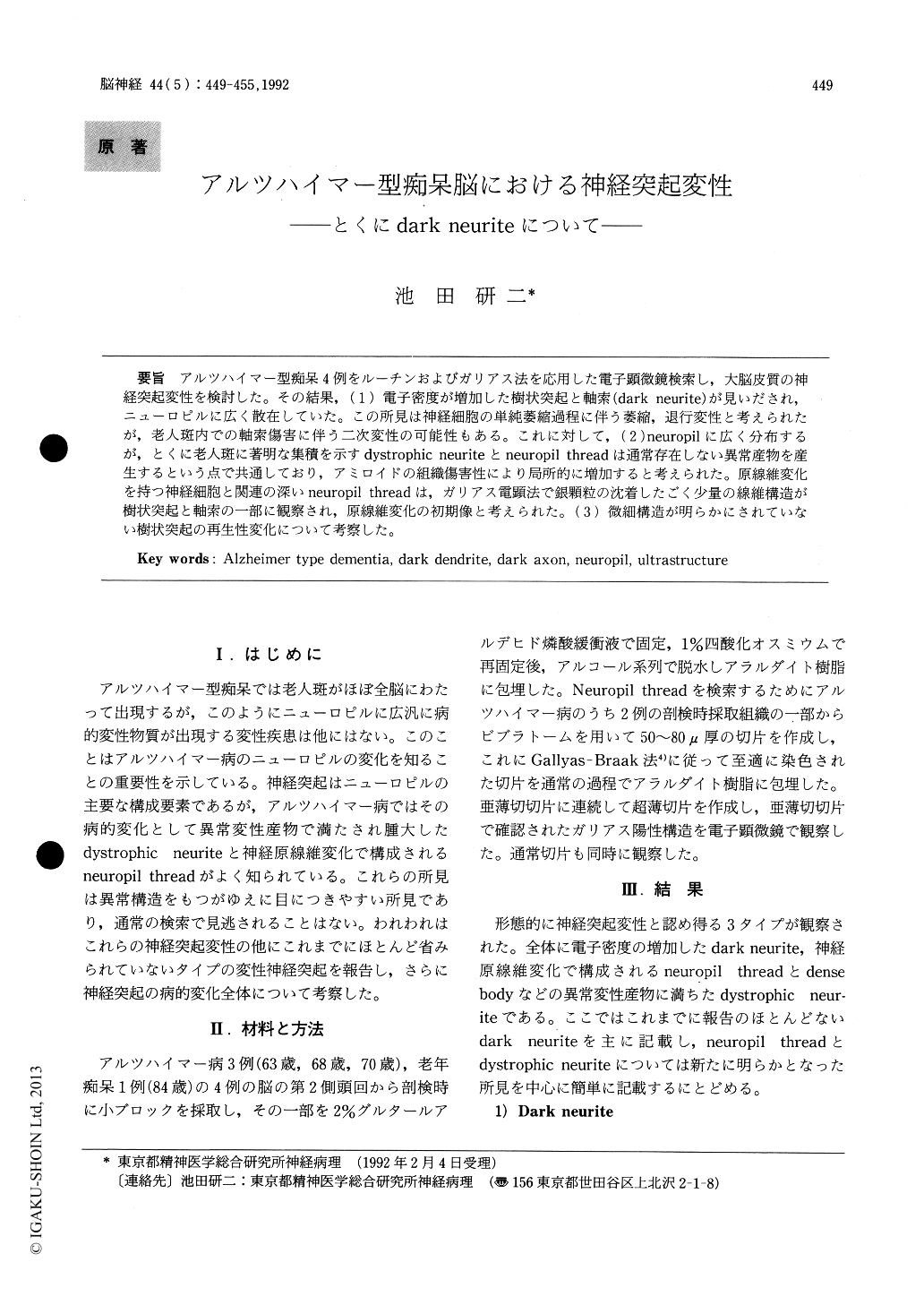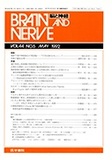Japanese
English
- 有料閲覧
- Abstract 文献概要
- 1ページ目 Look Inside
アルツハイマー型痴呆4例をルーチンおよびガリアス法を応用した電子顕微鏡検索し,大脳皮質の神経突起変性を検討した。その結果,(1)電子密度が増加した樹状突起と軸索(dark neurite)が見いだされ,ニューロピルに広く散在していた。この所見は神経細胞の単純萎縮過程に伴う萎縮,退行変性と考えられたが,老人斑内での軸索傷害に伴う二次変性の可能性もある。これに対して,(2)neuropilに広く分布するが,とくに老人斑に著明な集積を示すdystrophic neuriteとneuropil threadは通常存在しない異常産物を産生するという点で共通しており,アミロイドの組織傷害性により局所的に増加すると考えられた。原線維変化を持つ神経細胞と関連の深いneuropil threadは,ガリアス電顕法で銀顆粒の沈着したごく少量の線維構造が樹状突起と軸索の一部に観察され,原線維変化の初期像と考えられた。(3)微細構造が明らかにされていない樹状突起の再生性変化について考察した。
Four cases of neuritic degeneration in the cere-bral cortex of Alzheimer-type dementia patients have been examined by routine and Gallyas-silver electron microscopy. This examination has reve-aled neuritic changes described below.
(1) Dendrites and axons with an increased elec-tron density (dark neurites) were found scattered throughout the neuropils, these dark neuritesthought to be either degraded neurites resulting from simple neuronal atrophy or retrograde and/or transsynaptic degeneration due to an axonal injury within the senile plaques.
(2) Both dystrophic neurites and neuropil threads were found scattered throughout the neuropils and showed some similarites in producing abnormal substances in their processes and in their manner of aggregating, especially within the senile plaque region. These degenerated neurites may have been caused by neurotoxicity of the amyloid. On Gallyas electron microscopic inspection, neurites often are found to have small fibrous and sometimes tubular structures on which silver particles are deposited. This finding may represent the initial stage of a neurofibrillary change.
(3) The regeneration of neurites though such ultrastructures is not known, but such concept is believed by many authors and is discussed.

Copyright © 1992, Igaku-Shoin Ltd. All rights reserved.


